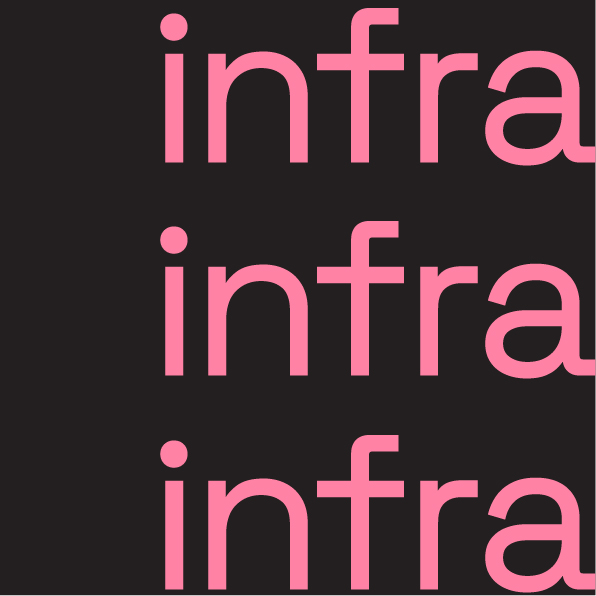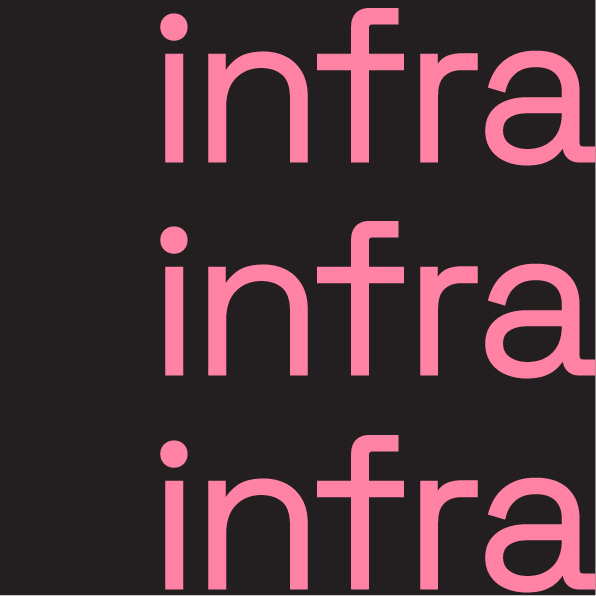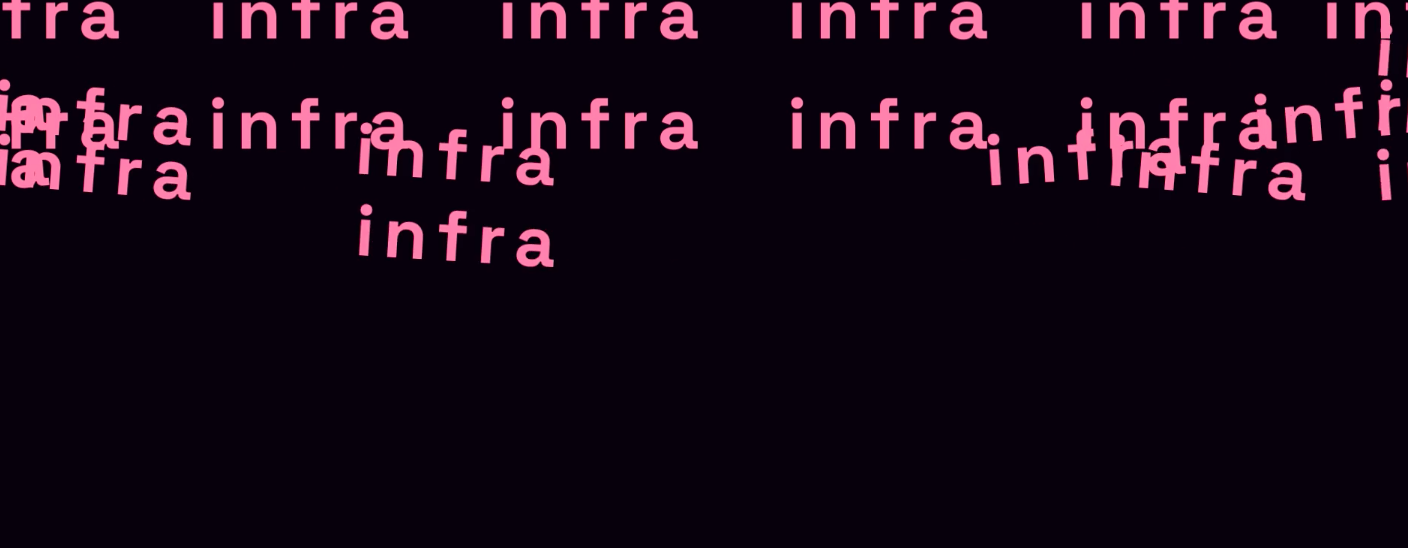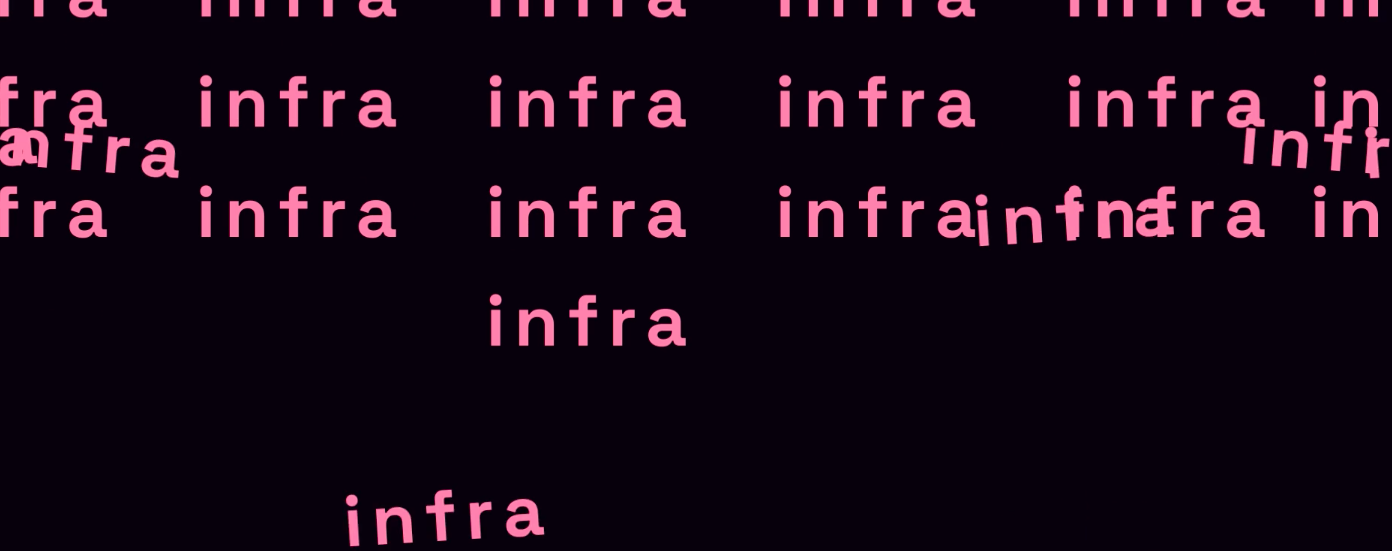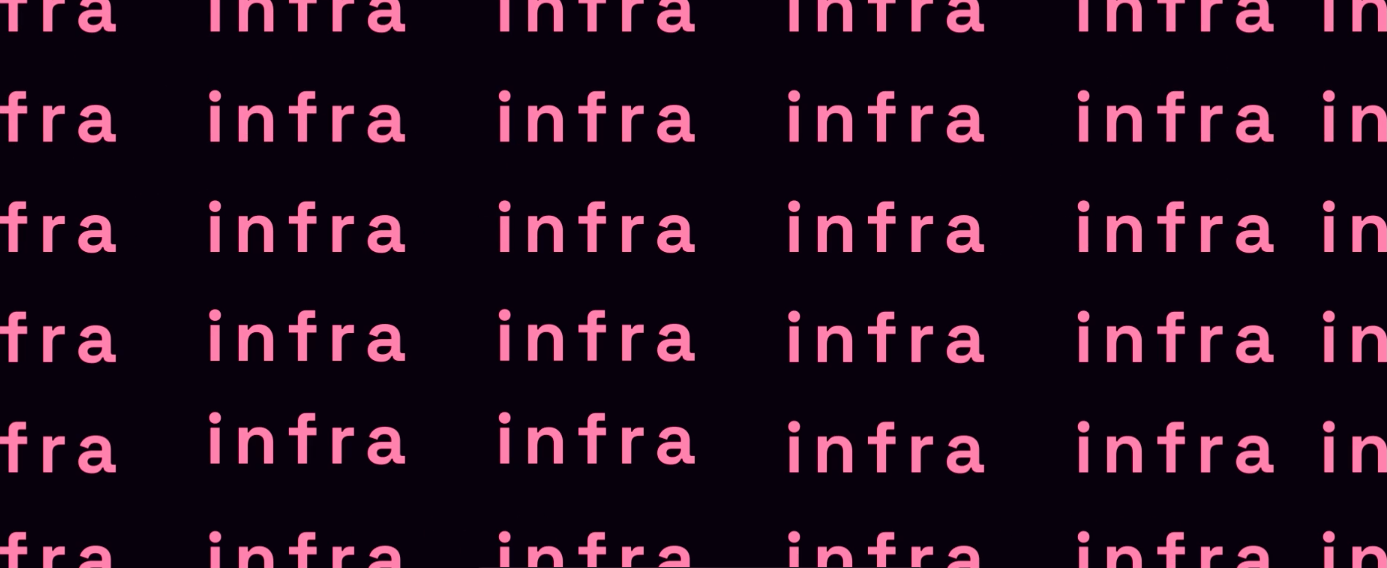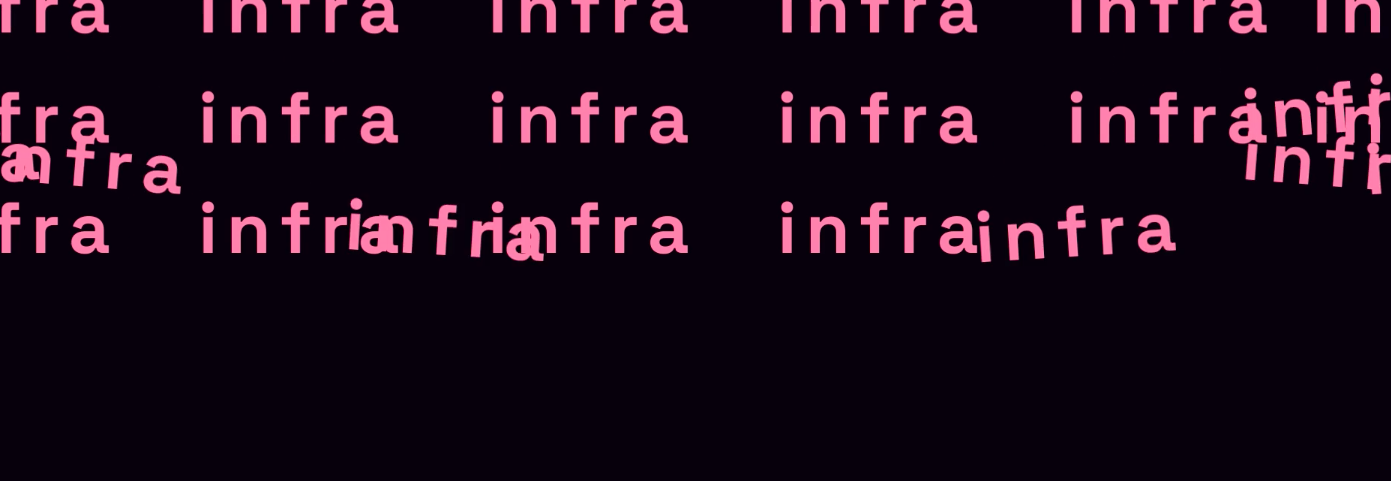INFRA
Basic information
Project Title
INFRA
Full project title
INFRA
Category
Shaping a circular industrial ecosystem and supporting life-cycle thinking
Project Description
INFRA, https://infra-magazine.com, is a new digital platform for cultural interchange. Created with the aim of cross-connecting visual arts sectors, this digital publication focuses on presenting geographical, curatorial and cultural dialogues.
Geographical Scope
Cross-border/international
Project Region
CROSS-BORDER/INTERNATIONAL: Slovenia, Other
Urban or rural issues
It addresses urban-rural linkages
Physical or other transformations
It refers to other types of transformations (soft investment)
EU Programme or fund
No
Description of the project
Summary
INFRA is a new digital platform for cultural interchange. Created with the aim of cross-connecting visual arts sectors, this digital publication focuses on presenting geographical, curatorial and cultural dialogues.
Infra is operating as an open source of learning – strategically created online before we move the operation into physical realm (via exhibitions, workshops and lectures), we are hoping to create an open laboratory for peer- to-peer exchange of knowledge and experience. By sharing varied personal development, artistic and architectural research with curatorial perspectives we aim to enable a wide range of tools available to everyone that desires to learn. Our aim is to address the challenges of the present to create the future. Through our work we share stories, research and possibilities for sustainable future in art and architecture. We want this green approach to influence our everyday experience that will drive the future.
Infra is operating as an open source of learning – strategically created online before we move the operation into physical realm (via exhibitions, workshops and lectures), we are hoping to create an open laboratory for peer- to-peer exchange of knowledge and experience. By sharing varied personal development, artistic and architectural research with curatorial perspectives we aim to enable a wide range of tools available to everyone that desires to learn. Our aim is to address the challenges of the present to create the future. Through our work we share stories, research and possibilities for sustainable future in art and architecture. We want this green approach to influence our everyday experience that will drive the future.
Key objectives for sustainability
Infra operates online with a vision in mind to cut the cycle of printed matter that is thrown away. Online format was also chosen due to the artistic vision of operating the platform as a live archive/ album – infra explores how publishing can be approached, where art and architecture are actively interchanged. Our next phase is to organise exhibitions and workshops with artists and architects – we want them to actively participate in peer-to-peer exchange to inspire the next generations of thinkers. My vision for infra is to be an agency of education that is an alternative to university system of learning through lectures and assignments. We want the classroom to be an open space, where participant choses the segments he wants to read or research – without following an imposed model. We are not insects thus perhaps we should not specialize as they do.
Key objectives for aesthetics and quality
Infra is an open source of learning and at its heart is research and experimentation. Everything is a question mark! Why does publishing look the way it does? Why are curatorial texts written in languages that can exclude non-traditional exhibition viewers? Why is the art market looking as it is? Why is the art world a closed entity? How can we enforce changes? How can we support new generations of artists and curators? By sharing experiences of previous generations to empower the next! We also look at why there are distinctions between art and architecture exhibitions. At the roles that museums play in our societies? How is the institutional environment changing with the rise of private art museums? How do museums affect societies and can they be voices of change? How does architecture affect our lives? Why is architecture looking as it is at the moment – why are certain materials used? What can be future more sustainable materials that will improve our quality of life. Our aim is to have an ongoing brainstorm – to unlock how can we through exchange of experiences create new possibilities in art and architecture for the future. We are looking at shifting mind-sets in a non - exclusive way. We want art and architecture to be accessible to all – after all they affect our lives the most. We live in buildings, posters and sculptures surround us in public realm- yet not very often do we think of their roles in our lives.
Key objectives for inclusion
Inclusion is at the heart of Infra. Having had the privilege due to the extensive financial sacrifice of my parents to attend UAL Central Saint Martins, where I was thrilled by the diversity and innovation of my programme and new approaches to curation, I did notice a problematic matter. The entrance to all campuses is only possible through a card (once a student) – which I found very odd given the idea of the university to be an open and accessible place while having visible entry requirements. This is not the case in any educational systems in my home countries of Croatia and Slovenia, where non- students can walk into classes and listen to lectures. This experience combined with my curatorial background and interest in the built environment and its effects on the quality of our lives led to the inception of infra. Education should not only be reserved for students who can afford certain tuition fees but should be an inclusive discourse.
Infra currently operates online – yet we are aware that this can also be problematic as not everyone has an access to a computer or smart mobile.
We hope to be able to with time organise exhibitions, workshops and lectures that would travel – spreading the word on the state of art and architecture worlds, their challenges and possibilities for the future. A future that is participatory and that is focused on actively building communities not just slogans of support.
Infra currently operates online – yet we are aware that this can also be problematic as not everyone has an access to a computer or smart mobile.
We hope to be able to with time organise exhibitions, workshops and lectures that would travel – spreading the word on the state of art and architecture worlds, their challenges and possibilities for the future. A future that is participatory and that is focused on actively building communities not just slogans of support.
Results in relation to category
So far the initiative won a Curatorial Award in Ireland through Firestation Artists' Studios. I presented the project at their institution to local artists and curators, where we had fantastic debates on the future of art and architecture experience. With funding I hope to achieve team expansion, more time for research and work and ability to travel which is vital for migration of ideas and information. We also hope to be able to create one off print version of our platform that would operate in limited edition due to our commitment to sustainability and would serve as a portable exhibition format.
How Citizens benefit
Infra is an open source of learning – our aim is to be engaging at all levels of society. We aim to highlight how art and architecture can change our lives, what roles they play in our societies and how we can create the future. By sharing discourses, experiences and taking on an informal role of institutional archives – we aim to share first - hand knowledge to all. This active online research (infra) is non - restrictive and open to be experienced and not available only through a scholarly inquiry in an institution.
We intentionally write our conversations with interviewees in a very talkative format to dismantle the barriers of language when addressing the visual arts fields. The role language plays in communication should also be questioned and researched.
We intentionally write our conversations with interviewees in a very talkative format to dismantle the barriers of language when addressing the visual arts fields. The role language plays in communication should also be questioned and researched.
Physical or other transformations
It refers to other types of transformations (soft investment)
Innovative character
The main difference between mainstream magazines or similar initiatives such as Flash Art, Mousse magazine, Domus, etc. is that we can be seen as an anti-magazine. We are not publishing reviews (mostly only positive) of individual exhibitions and promoting businesses. Also our language is much more talkative – as talking to a friend. We create articles in close connection with interviewees – there are even months long discussions with back and forth of joint editing. We like this intimate approach and really giving a platform to different ideas. We promote thinking – we share experiences of world renowned curator and co-founder of Palais de Tokyo, Jerome Sans; next to Etienne Issa, environmental researcher looking at the future materials of building cultures. While Sans discusses the state of the art world, Issa looks at the properties of materials. We admire innovation, directness and not shying away from discourses! Changes occur though action – we want to inspire people to embrace new possibilities and think critically.
Disciplines/knowledge reflected
Infra is non-restrictive. While the focuses are art and architecture, we also look at design and its role in societies. There are changes occurring in how art and architecture are perceived with a lot of migration happening between the fields – architects working as curators and artists, curators operating as exhibition designers and architecture theoretics. We want to highlight these shifts and how they are creating a new world that is active and not static. These transitions are inspirational and can also encourage the shifts of interest for our audience, to think critically of surrounding world – how our environments and culture are produced. Infra is a system that encourages reciprocity! The exchange of knowledge is for us the highest value. Knowledge is a singular treasure an individual has and once shared it creates communities and enforces changes – we want to be part of change towards a greener way of life and learning.
Methodology used
N/A – we operate globally by highlighting local and regional contexts.
How stakeholders are engaged
We immediately focused on global audience – as we want to contribute to a shift in mindset! By highlighting how are art and architecture approached – on theoretical and physical level we want to show that this affects the lives of everyone. By enabling the widespread usage of the tools to experience both fields, thrive in the working environment and participate in the future of both – we are building a community. We hope that this will with time lead to changes in art and architecture and improve our quality of life!
Global challenges
Infra is a question mark - an open source for debate. Why are there distinctions between art, architecture and design? How can the fields learn from each other and engage on a new level? How is knowledge in all fields produced and what traces of colonial past are still present? How can we approach art, architecture and design from new perspective? What are challenges of industries? Can there be spaces for changes? How do societal behaviours visible in all fields? How can we change our behaviours? We question the state of the art-world - how curation is approached? What are new possibilities for exhibition -making? How museums work and their roles in our societies? Can museums contribute to change? How can they work on their learning and engagement role. How is architecture restricted? How can we improve our living conditions? How are spaces and places experienced. Our next aim is to organise local lectures, exhibitions and workshops that address some of these questions.
Learning transferred to other parties
Peer- to –peer exchange is for us a valuable experience as it offers an insight into thinking and solution finding. We currently operate online but the aim is to expand our work into a physical laboratory that connects visual arts with science by creating a singular community as did Bauhaus.
Keywords
VISUAL ARTS
CURATION
ARCHITECTURE
FUTURE THINKING IN ARCHITECTURE; ART AND MATERIALS
CHALLENGES OF ART AND ARCHITECTURE INDUSTRIES

